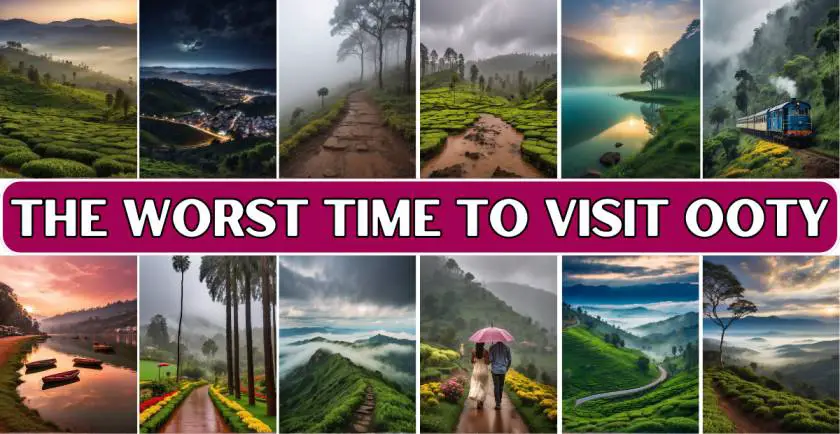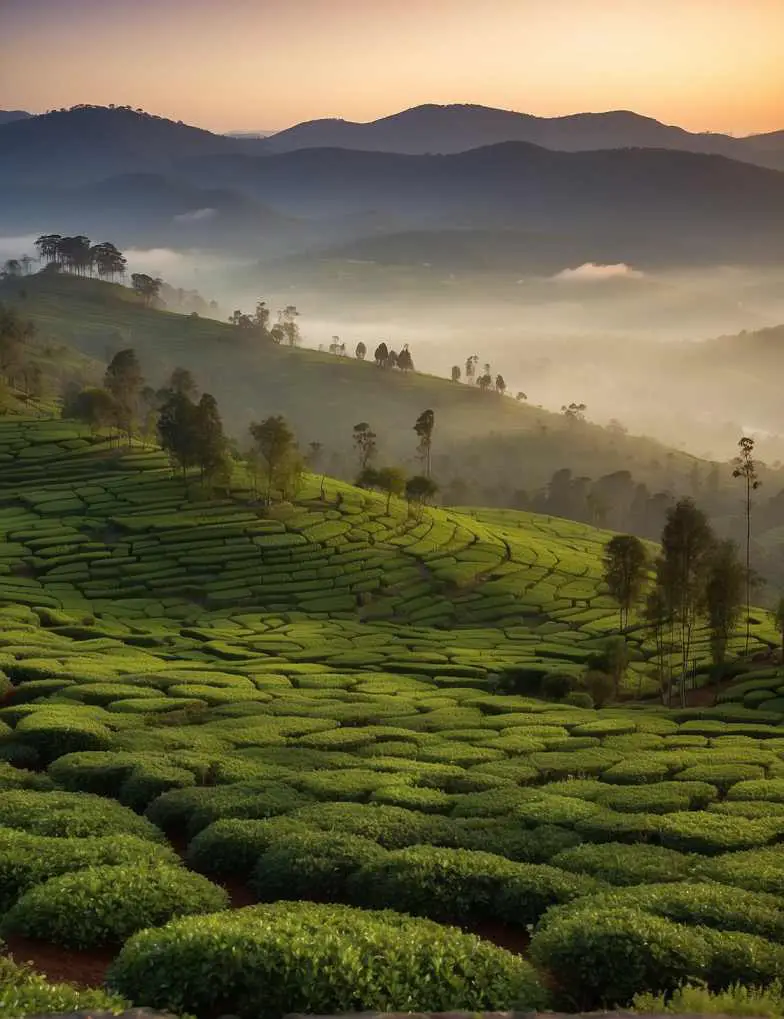
Nestled in the Nilgiri Hills, Ooty is a picturesque hill station in South India that beckons travelers with its lush tea gardens, misty landscapes, and pleasant weather. However, as with any popular destination, there are times when a visit to Ooty might not live up to your expectations. In this blog, we delve into when exactly might be the ‘worst time to visit Ooty’, with a special focus on families and honeymooners.
The Monsoon Months – Challenges and Considerations
The monsoon season in Ooty, extending from June to September, presents a unique set of challenges for travelers. While the rains bring a refreshing and verdant makeover to the landscape, making it lush and green, they also bring complications that are important to consider, especially for families and honeymooners.
Heavy Rainfall and Its Impacts:
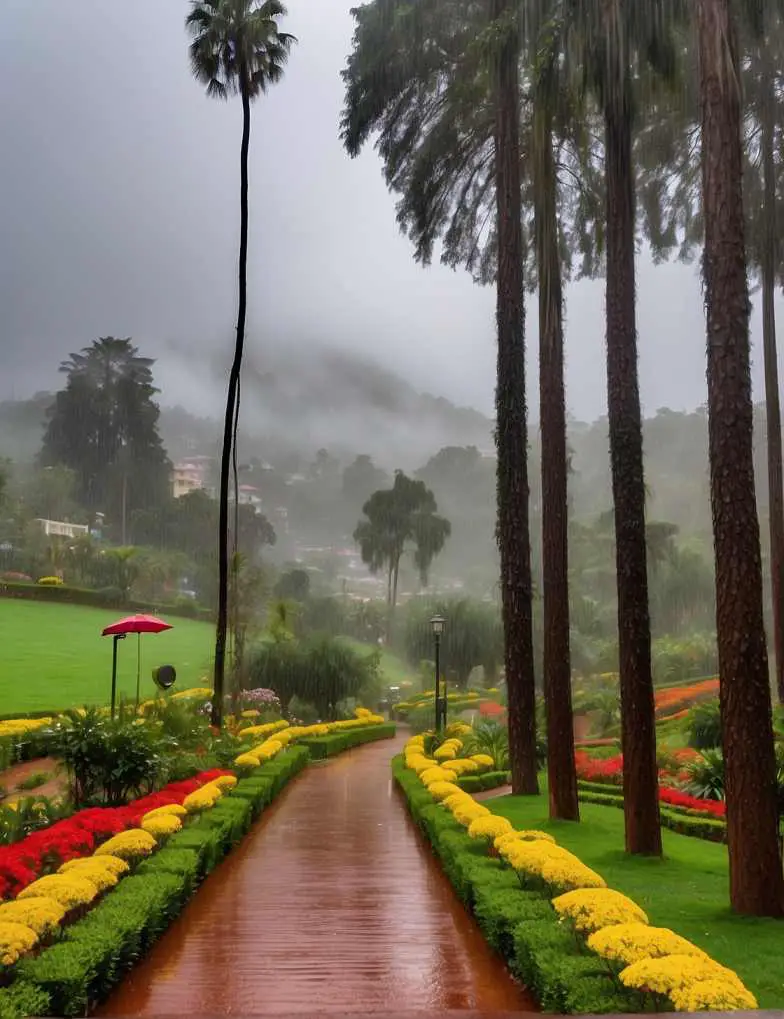
During these months, Ooty experiences substantial rainfall. The downpours can be relentless, often continuing for days. This not only limits the opportunity for sightseeing and outdoor activities but also raises practical challenges. Landslides and road blockages are not uncommon, potentially disrupting travel plans. For families, this means being confined indoors with limited activities for children. Honeymooners looking for romantic walks or outdoor dining will find their options severely restricted.
Transportation Woes:
The heavy rains can make roads slippery and, at times, impassable. This poses a significant risk for travelers who are not accustomed to driving in such conditions. Public transportation, including buses and taxis, may also be less reliable during this period due to the adverse weather conditions. For those traveling with family, it becomes even more critical to ensure safe and comfortable travel arrangements.
Limited Access to Attractions:
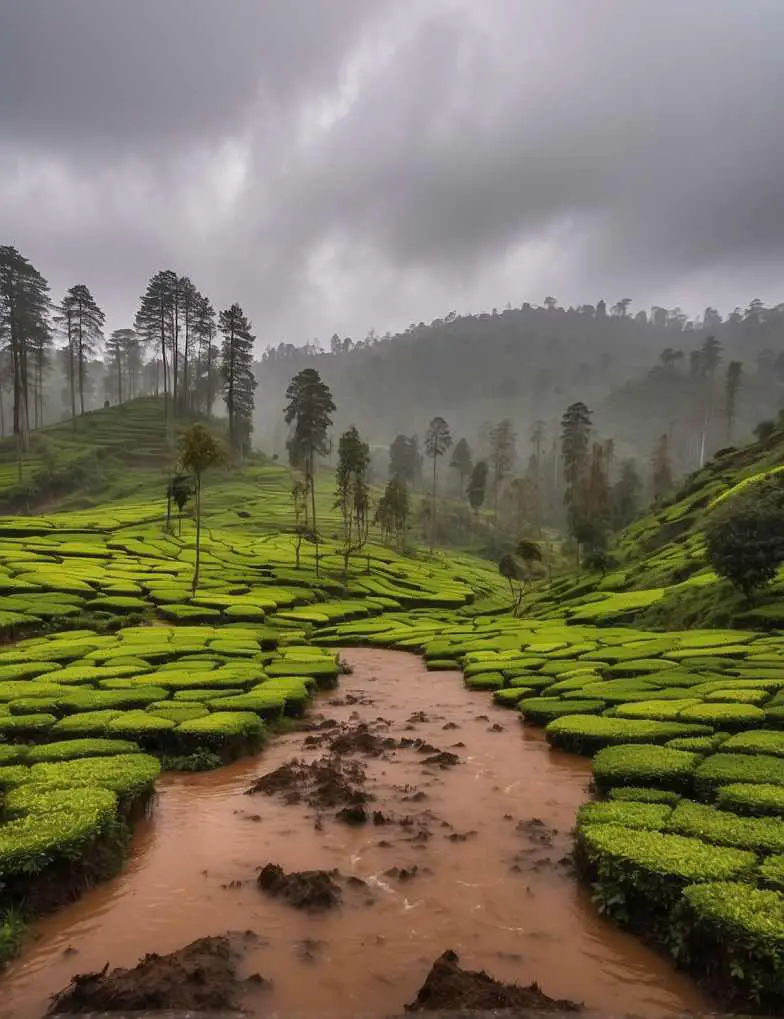
Many of Ooty’s famed attractions, like the Botanical Gardens, Doddabetta Peak, and the tea estates, lose their accessibility during the monsoon. Frequent closures of these sites can be expected due to safety concerns. For families, this means fewer places to explore with kids, and for honeymooners, it curtails the quintessential Ooty experience.
Accommodation Challenges:
While you might find lower rates at hotels and resorts during the monsoon, the experience can be dampened by the weather. Power outages are more frequent during heavy rains, and not all accommodations may be equipped with adequate backup facilities. Additionally, the high humidity can make rooms feel damp and uncomfortable, something families with young children or elderly members need to be particularly aware of.
The Silver Lining:
Despite these challenges, the monsoon season in Ooty has its own charm. The hills and valleys covered in a blanket of green are a sight to behold. For photographers and nature lovers, this can be an enchanting time. The misty landscapes create a romantic atmosphere, although outdoor activities might be limited.
The Crowded Peak Season – When Ooty Loses Its Charm
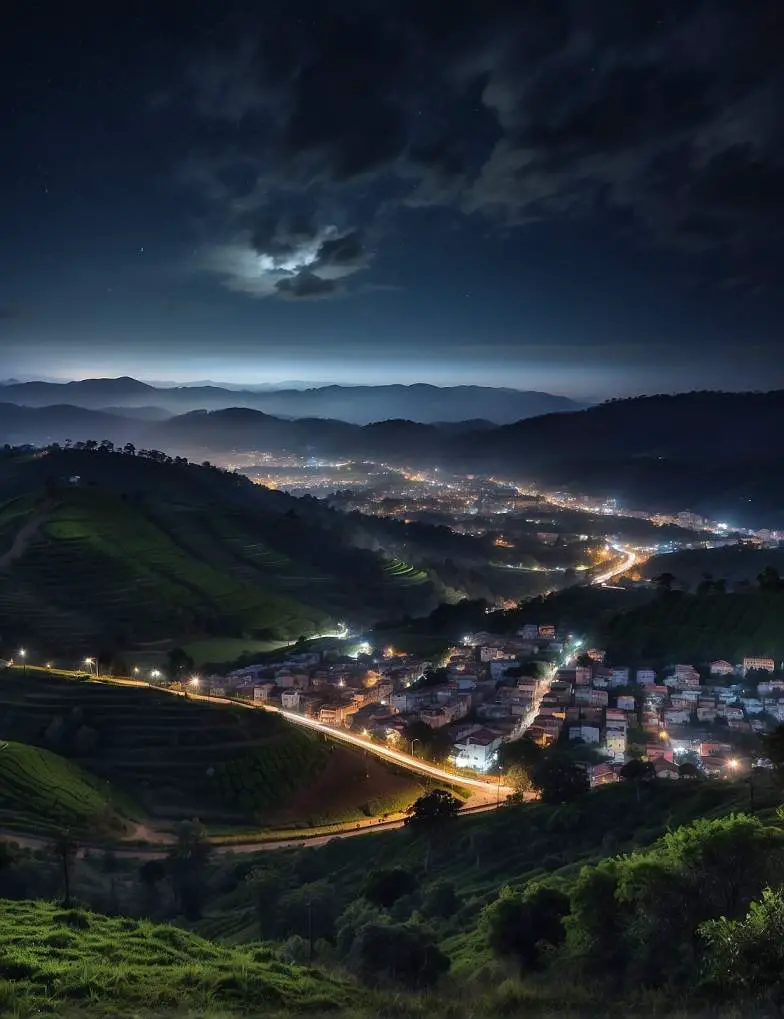
The peak tourist season in Ooty, which runs from April to June, corresponds with the summer break for schools in India, leading to a significant influx of tourists. This period, while popular for its pleasant weather, can also be the least appealing time to visit for those seeking the tranquil beauty and serenity Ooty is known for.
Overcrowding and Its Consequences:
The most immediate effect of the peak season is overcrowding. Ooty’s narrow roads become jam-packed with tourist vehicles, leading to traffic snarls and extended travel times between attractions. For families, this means spending more time in transit and less time enjoying the attractions, which can be particularly taxing if traveling with young children. Honeymooners searching for intimate, quiet moments will find this bustling atmosphere counter to their expectations of a serene hill station retreat.
Inflated Prices and Commercialization:
During these months, the cost of accommodation, food, and local transportation can skyrocket. Hotels and homestays, even those typically considered budget-friendly, hike their prices due to the high demand. Dining out, especially in popular restaurants, also becomes an expensive affair. This commercialization can strain the budgets of families and couples alike, making the trip less enjoyable and more about managing expenses.
Strain on Local Resources and Attractions:
The sheer volume of tourists puts a strain on Ooty’s infrastructure and resources. Popular tourist spots like the Ooty Lake, the Botanical Gardens, and the Rose Garden become overcrowded, diminishing the charm and serenity they are known for. Long queues and wait times can be expected at most attractions. For families, keeping an eye on children becomes more challenging in crowded spaces, and the overall experience can become more stressful than enjoyable. Honeymooners looking for romantic strolls or peaceful explorations will find these crowded settings far from ideal.
Environmental Impact:
The influx of tourists also leads to environmental concerns. Issues like littering, pollution, and a general strain on natural resources become more pronounced during the peak season. This not only detracts from the natural beauty of Ooty but also raises concerns about sustainable tourism.
Alternatives for Travelers:
Despite these challenges, travelers who can only visit during these months can still find pockets of peace and quiet. Exploring lesser-known attractions, staying in offbeat accommodations away from the town center, and visiting popular spots during off-peak hours can help mitigate some of the problems associated with the peak season.
Off-Peak Woes – Limited Services and Activities
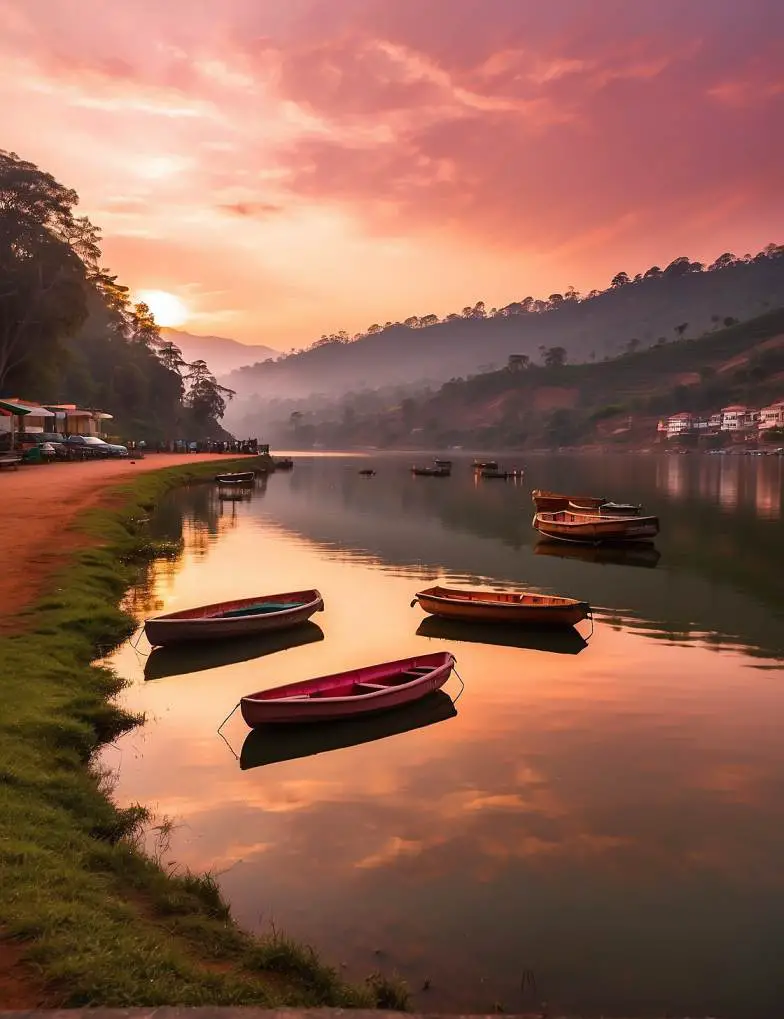
Visiting Ooty during the off-peak months, which typically span from late November to February, might initially seem like a savvy traveler’s choice. This period, however, comes with its own set of challenges that can significantly impact the experience of families and honeymooners.
Colder Temperatures and Reduced Daylight:
One of the most notable features of the off-peak season in Ooty is the colder weather. The temperatures can dip significantly, especially during the nights and early mornings, which might be uncomfortable for families with young children or elderly members. Reduced daylight hours also mean shorter sightseeing times, which can be a drawback for those looking to explore as much as possible.
Closure of Attractions and Limited Activities:
During these months, several of Ooty’s attractions either shut down or have reduced visiting hours. This is partly due to maintenance activities and also because of the lesser number of visitors. For families, this means fewer entertainment options for kids, and for honeymooners, the romantic experience of visiting Ooty’s famous gardens or lakes might be limited. Activities like boat rides in Ooty Lake or visiting the Doddabetta Peak might be subject to weather conditions and availability.
Accommodation and Dining Options:
Many hotels, resorts, and restaurants in Ooty operate on a limited scale or close down during the off-peak season. This could result in fewer choices for accommodation and dining, potentially impacting the quality of your stay. For families, finding child-friendly amenities and food options might become more challenging. Honeymooners looking for special experiences like candle-lit dinners or luxury spa services might find such amenities less available during this time.
Limited Cultural Events or Festivals:
Ooty is known for its vibrant cultural scene, with several festivals and events happening throughout the year. However, the off-peak months generally see a lull in these activities. Travelers, especially those interested in experiencing the local culture and traditions, might find this period less appealing.
Travel and Accessibility:
While traveling to and within Ooty might be easier during the off-peak season due to lesser tourist traffic, some areas, especially in the outskirts, might be less accessible. Public transportation services are often reduced, and some tour operators may not offer their full range of services.
Related Articles-
Health and Safety Concerns
Regardless of the season, health and safety in Ooty are paramount. The monsoon season often brings with it waterborne diseases, which can be a particular concern for families with young children. Visitors during this time should be cautious about where they eat and drink. For all travelers, staying informed about the weather and road conditions is crucial to ensure a safe and enjoyable trip.
Tips for Planning Your Visit
Visiting Ooty, regardless of the season, can be a delightful experience with the right planning. Here are some essential tips to ensure your trip is enjoyable, whether you’re traveling with family or embarking on a romantic honeymoon.
1. Research and Book in Advance:
- For Families: Look for family-friendly accommodations that offer activities for children. Book well in advance, especially if you’re traveling during the peak season, to ensure availability and better rates.
- For Honeymooners: Consider boutique hotels or homestays that provide a more intimate setting. Many places offer special honeymoon packages, so it’s worth exploring these options.
2. Pack Appropriately:
- For All Travelers: The weather in Ooty can be unpredictable. Pack layers, including warm clothes for the evening and rain gear if you’re visiting during the monsoon.
- For Families: Ensure you have all the essentials for children, such as medicines, warm clothing, and entertainment for indoor days.
- For Honeymooners: Don’t forget to pack a few special outfits for romantic dinners or photo sessions.
3. Plan Your Itinerary Wisely:
- For Families: Choose attractions that are kid-friendly and not too far apart. Keep your days flexible to accommodate weather changes or children’s needs.
- For Honeymooners: Include some offbeat or less crowded attractions in your itinerary for more privacy and a unique experience.
4. Be Prepared for Transportation:
- For All Travelers: If you’re not comfortable driving in hilly areas, consider hiring a local driver. Check the availability of public transport and the reliability of taxi services in advance.
- For Families: Ensure you have car seats or appropriate arrangements for safe travel with children.
5. Stay Informed:
- For All Travelers: Keep an eye on the weather forecast and local news for any updates that might affect your travel plans.
- For Honeymooners: Stay updated on the operational status of romantic spots or special events you plan to attend.
6. Consider Off-Peak Travel:
- For Families: Traveling during off-peak times can be less stressful with fewer crowds and more affordable prices.
- For Honeymooners: Off-peak travel can offer a more secluded and romantic experience. Check for off-season deals that many resorts offer.
7. Health and Safety:
- For All Travelers: Carry a basic first aid kit and be aware of the nearest medical facilities.
- For Families: Pay special attention to children’s health needs, including allergies and food sensitivities.
- For Honeymooners: Ensure you have all necessary health precautions in place, especially if participating in adventurous activities.
FAQs (Frequently Asked Questions)
1. What is the peak season in Ooty?
The peak tourist season in Ooty is from April to June. This period coincides with the summer break in schools across India and offers pleasant weather, making it a popular time for tourists.
2. Which month is rainy in Ooty?
The rainy season in Ooty typically starts in June and lasts until September. This period is characterized by heavy monsoon rains.
3. Is it safe to visit Ooty during the rainy season?
While Ooty can be visited during the rainy season, travelers should be aware of potential landslides and road blockages. It’s advisable to check weather forecasts and local advisories before planning a trip during this time.
4. Which month is best to visit Ooty and Kodaikanal?
The best time to visit both Ooty and Kodaikanal is from October to March. During these months, the weather is generally pleasant, making it ideal for sightseeing and outdoor activities.
5. Which month is coldest in Ooty?
The coldest month in Ooty is usually January, when temperatures can drop significantly, especially during the night.
6. Does landslide occur in Ooty?
Yes, landslides can occur in Ooty, particularly during the heavy monsoon season. It’s important to stay informed about local conditions if traveling during this time.
7. What is the highest rainfall in Ooty?
Ooty receives the highest rainfall during the monsoon months, particularly in July and August. The exact figures can vary year to year.
8. How many days are required for a trip to Ooty?
A trip of 3 to 4 days is usually sufficient to explore the major attractions in Ooty. However, if you want to visit the surrounding areas or enjoy a more relaxed pace, a week would be ideal.
9. What is the current climate in Ooty?
The current climate in Ooty depends on the time of the year. Generally, it ranges from cool and pleasant to cold, with monsoon rains from June to September. For real-time weather updates, it’s best to check a reliable weather forecasting service close to your travel dates.
10. Can we visit Ooty and Kodaikanal in July?
Yes, you can visit Ooty and Kodaikanal in July, but be prepared for the monsoon weather with heavy rains and plan your activities accordingly.
Conclusion:
While there are times that might be less than ideal to visit Ooty, with thoughtful planning, your trip can still be a memorable one. Whether you’re a family looking for a fun vacation or a couple on your honeymoon, understanding the pros and cons of each season can help you make the most of your visit to this enchanting hill station.
